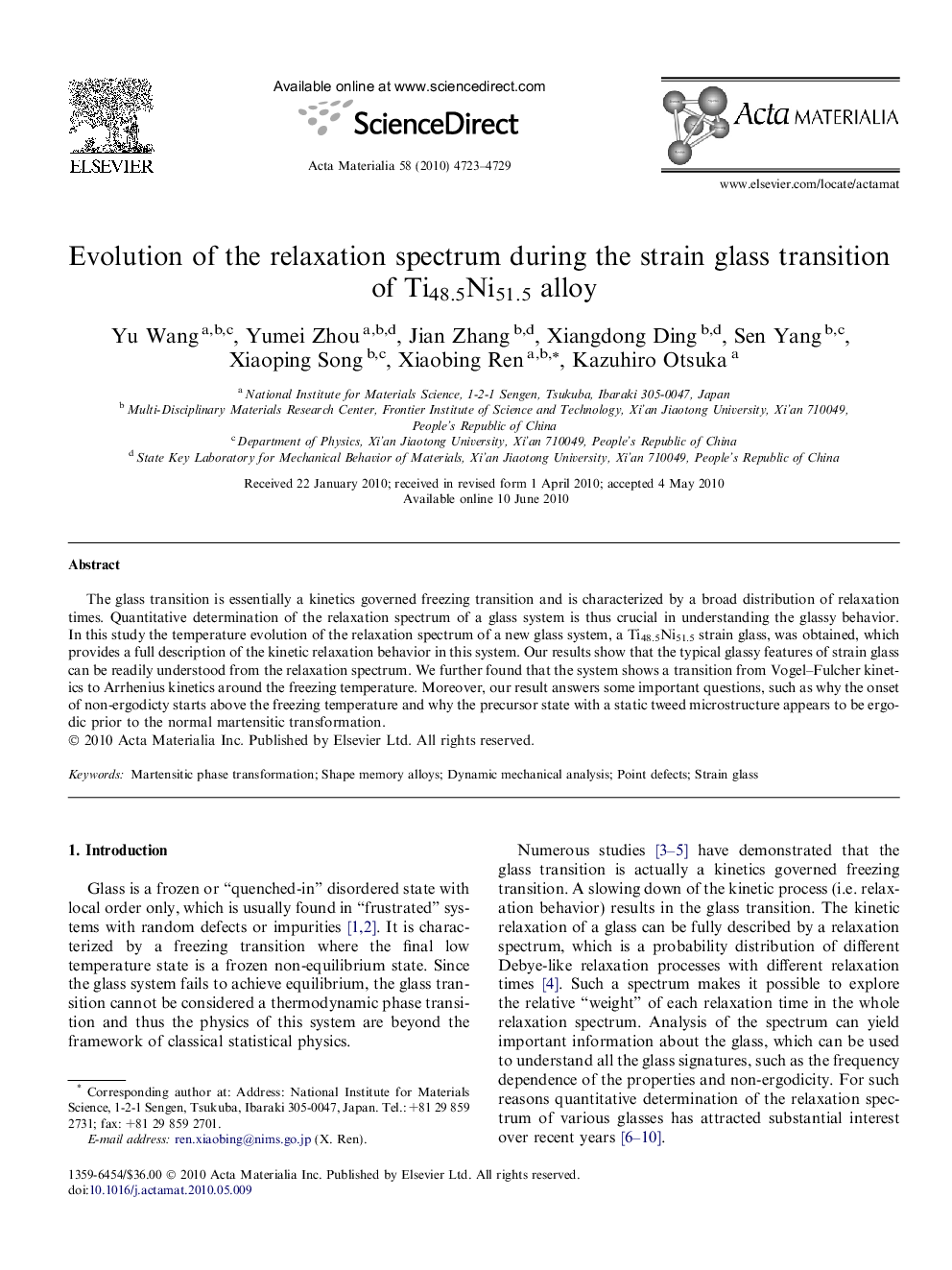| Article ID | Journal | Published Year | Pages | File Type |
|---|---|---|---|---|
| 1447384 | Acta Materialia | 2010 | 7 Pages |
The glass transition is essentially a kinetics governed freezing transition and is characterized by a broad distribution of relaxation times. Quantitative determination of the relaxation spectrum of a glass system is thus crucial in understanding the glassy behavior. In this study the temperature evolution of the relaxation spectrum of a new glass system, a Ti48.5Ni51.5 strain glass, was obtained, which provides a full description of the kinetic relaxation behavior in this system. Our results show that the typical glassy features of strain glass can be readily understood from the relaxation spectrum. We further found that the system shows a transition from Vogel–Fulcher kinetics to Arrhenius kinetics around the freezing temperature. Moreover, our result answers some important questions, such as why the onset of non-ergodicty starts above the freezing temperature and why the precursor state with a static tweed microstructure appears to be ergodic prior to the normal martensitic transformation.
